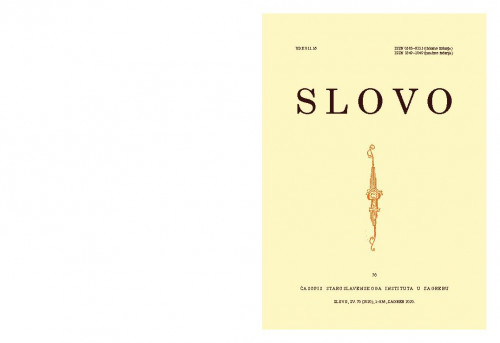U Urachu kraj Tübingena je otisnuto protestantsko izdanje Novoga testamenta, na glagoljici (I. dio 1562. i II. dio 1563.). Poznato je da su u njegovu prevođenju sudjelovali Istranin Stipan Konzul i drugi istarski svećenici. Svi su oni dobro poznavali crkvenoslavenske kodekse nastale i upotrebljavane u središnjoj Istri, baš kao što su i Beramski brevijari. Iako je dobro poznato i već potvrđeno, da su protestanti napravili odlučan iskorak prema narodnom jeziku zanimat će nas ‒ na temelju konkretne usporedne analize ‒ u kolikoj je mjeri to doista i provedeno, odnosno koliko se u njima ipak odražava poznavanje crkvenoslavenskih prijevoda. Osim toga, ustanovljena je bliskost protestantskih prijevoda s latiničkim lekcionarima, pri čemu se utvrdila sličnost sa Zborovčićevim lekcionarom iz 1543. godine, otisnutim u Veneciji, a riječ je o drugom izdanju Lekcionara Bernardina Splićanina (1495.). Analiza je napravljena na tekstu Prve Epistole svetoga Pavla Korinćanima (1 Kor 11,20–33) koji se nalaze u Drugom beramskom brevijaru iz 15. stoljeća kao predstavniku srednjoistarskog kodeksa, te u Lekcionaru Bernardina Splićanina i u II. dijelu glagoljicom pisanog protestantskog izdanja Novoga testamenta. Usporedbom se dolazi do zaključka da čakavski, tj. hrvatski elementi prevladavaju u Novom testamentu, dok je udio crkvenoslavenskih elemenata u ovom dijelu teksta zanemariv.; The Protestant edition of the New Testament was printed in Urach near Tübingen (the 1st part in 1562 and the 2nd in 1563). It is a known fact that Stipan Konzul and other Istrian priests participated in its translation. All of them were well acquainted with Church Slavonic codices, such as the Beram breviaries, that originated and were used in central Istria. Even though it has already been confirmed that the Protestants took a decisive step towards the vernacular, a detailed comparative analysis will precisely illustrate how extensive it was and to what extent the breviaries reflect the knowledge of Church Slavonic translations. Also, similarity has been established between the Protestant translations and the Latin lectionaries, namely the Zborovčić Lectionary printed in Venice in 1543, which is, in fact, the second edition of Lectionary of Bernardin from Split (1495). The analyses were conducted on the text of the First Epistle of St.Paul to the Corinthians (1 Kor 11,20–33), as part of the 15th century Second Beram Breviary, representing the codices of Central Istria, the Lectionary of Bernardin of Split and in the second part of the printed Protestant glagolitic New Testament. The results show that the Chakavian, i.e. Croatian elements are predominant in the New Testament, while the share of Church Slavonic elements in this part of the text is insignificant.
Sažetak

 Slovo : časopis Staroslavenskoga instituta u Zagrebu : 70(2020) / glavna i odgovorna urednica Vida Vukoja.
Slovo : časopis Staroslavenskoga instituta u Zagrebu : 70(2020) / glavna i odgovorna urednica Vida Vukoja.